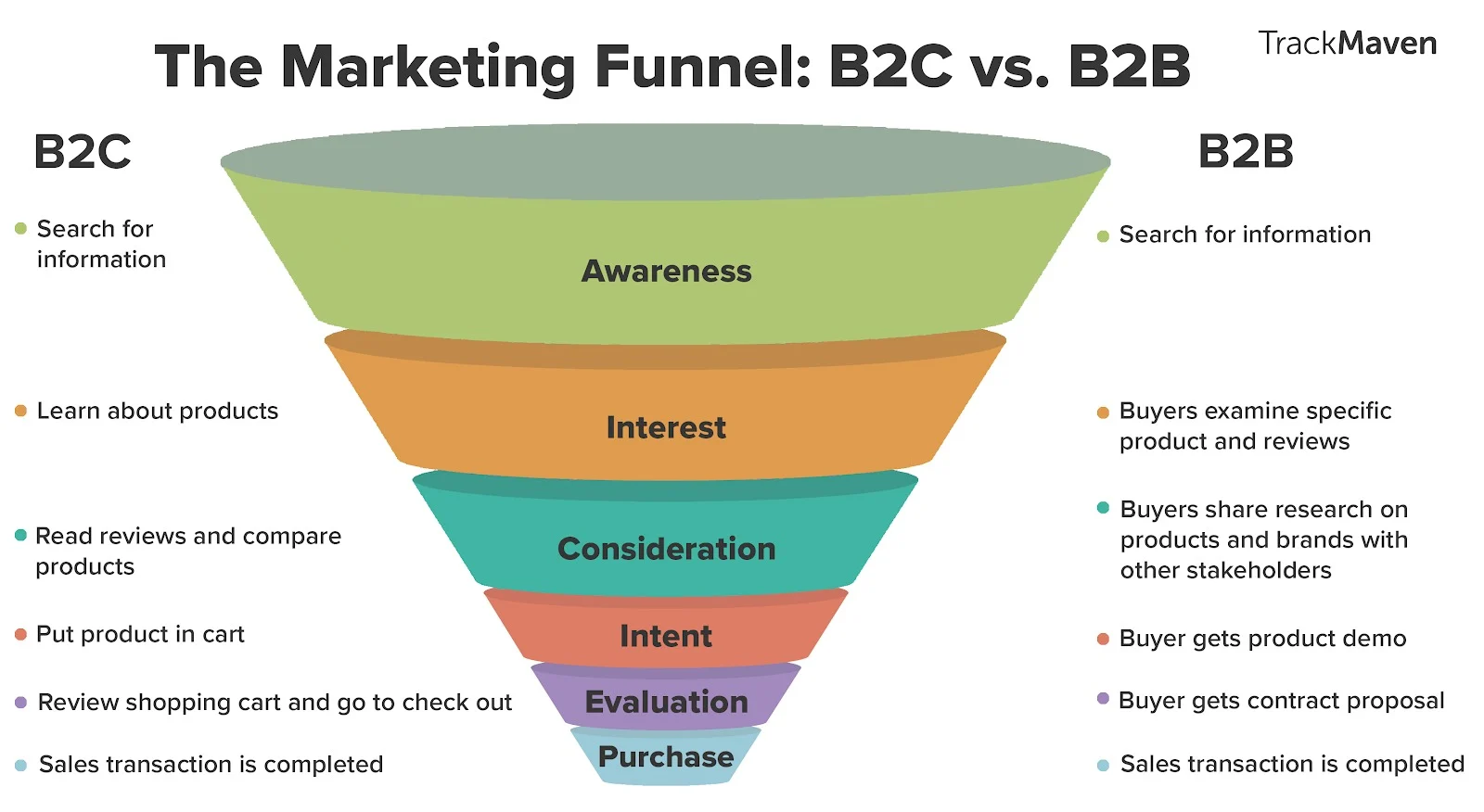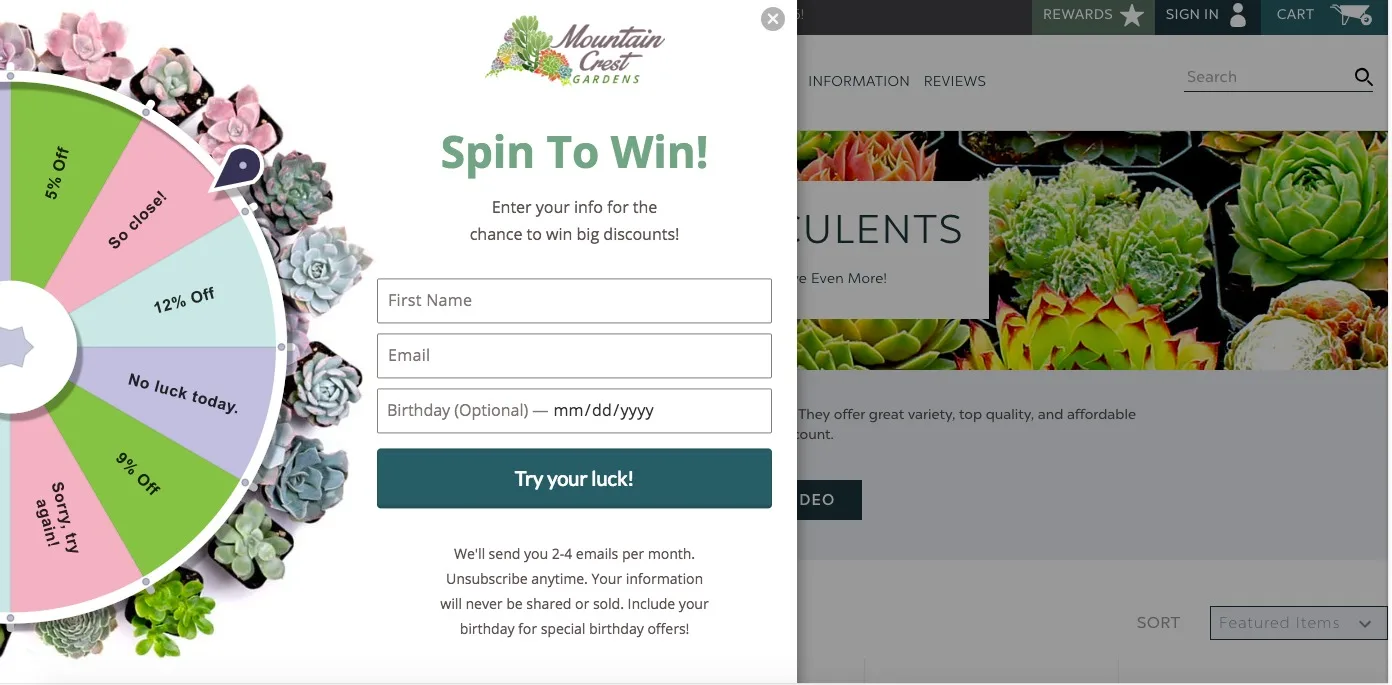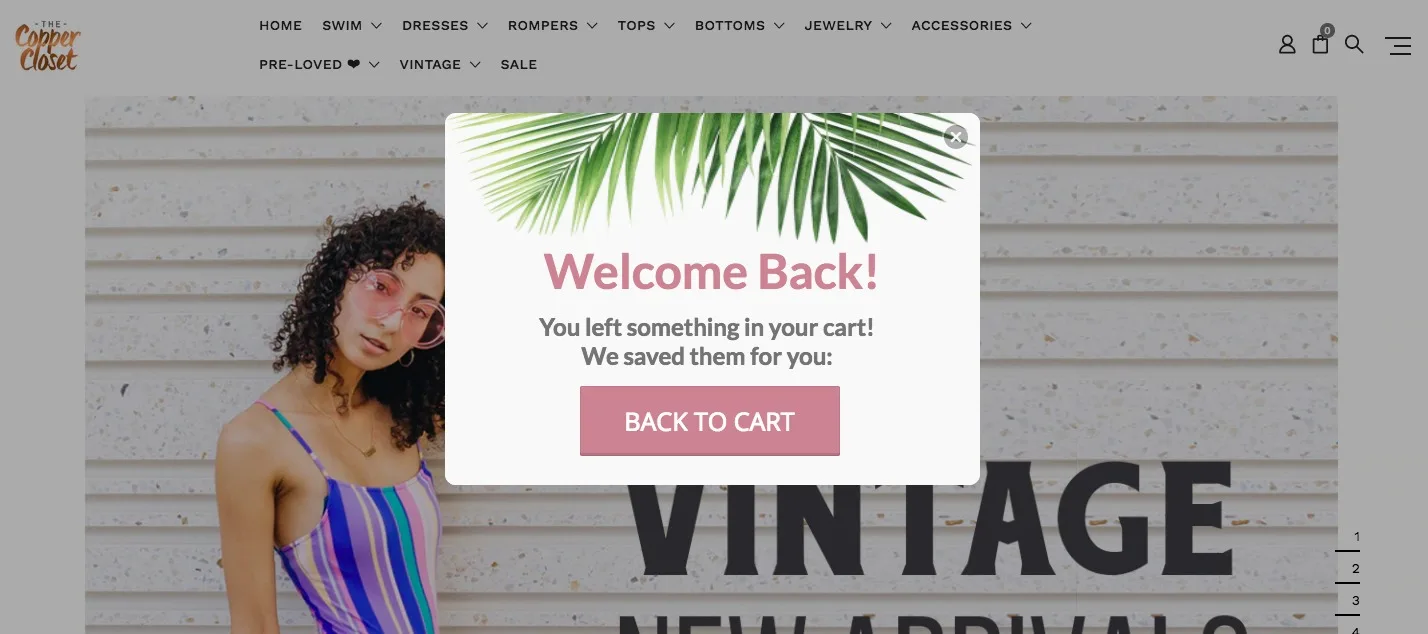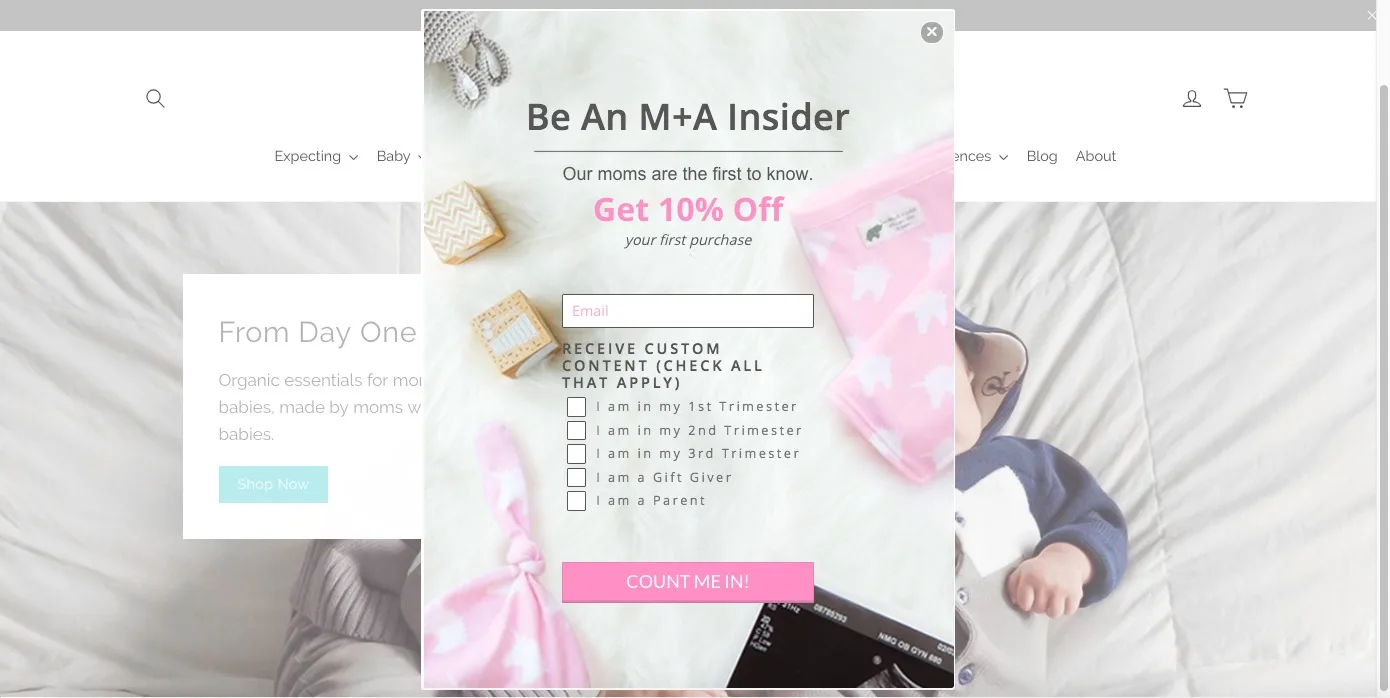Retention Marketing: Why You Should Shift Your Focus From Customer Acquisition


Retention Marketing: Why You Should Shift Your Focus From Customer Acquisition
Get The Print Version
Tired of scrolling? Download a PDF version for easier offline reading and sharing with coworkers.
A link to download the PDF will arrive in your inbox shortly.
Did you know that repeat customers are responsible for 40% of a store’s revenue?
And what’s even more mind-blowing, is that a 40% share of overall revenue is generated by only 8% of customers. Your most loyal customers.
If this is the case, why are so many brands still focused on customer acquisition? Think about it. Brands spend thousands of dollars each month on Google Adwords, Facebook, Instagram, you name it. In fact, according to Profit Well, the overall customer acquisition cost has risen almost 50% over the last five years. At the end of the day, those dollars really add up, eating away at profit margins.
The most successful brands are making customer retention a priority – because they know that the customers they already have are the ones that make them a sustainable, thriving business.
What is Retention Marketing?
While retention marketing may sound like just another buzzword, it’s extremely important to the growth and sustainability of every ecommerce business.
In short, retention marketing focuses on repeat purchases from past customers. The main goal of retention marketing is to make repeat customers purchase more frequently and with larger order value, maximizing the lifetime value of your customers.
Keep in mind, customer retention marketing should only be one piece of your overall ecommerce marketing strategy. Customer acquisition will always be an important component, but let’s dive into why customer retention marketing should be a critical focus.
Businesses Need for Retention Marketing
You may be thinking to yourself, “Hey, I’m a profitable business. I don’t need to worry about making sure that shoppers return to my website.”
But why wouldn’t you take advantage of this massive opportunity? New customer acquisition is only getting more expensive. Over the last five years, overall CAC for B2B and B2C brands has risen almost 50% — and while paid CAC is still higher than organic CAC, organic costs are also rising at a faster rate. High customer retention rates cut down on these costs — which is one of the many reasons why retention is important to any business.
Let’s discuss why customer retention matters.
1. Repeat customers are far cheaper to get than new customers.
It’s a simple fact. Think about all of the money you spend driving shoppers to your site. Even if your tactics work, there’s no guarantee that that shopper will continue on to make a purchase. But existing customers have a much higher conversion rate. In fact, they are 9 times more likely to complete a purchase than new customers.
On top of rising customer acquisition costs, you are competing with more and more brands for ad space as the ecommerce ecosystem continues to grow.
2. Repeat customers require little product onboarding/information.
Your existing customers already know about how awesome you are. But folks that are brand new to your site may not be quite ready to commit upon first sight. They are simply in the consideration stage of the funnel. They may need to take some time to compare prices, read up on reviews, and more.

Image via TrackMaven
Returning customers have already been through the consideration and onboarding process and trust that you are selling a top-quality product.
Let’s say you have a skincare line. If your customers are blown away by your face scrub, they might come back for a moisturizer or a toner.
3. Repeat customers are more loyal.
You probably have one or two go-to stores for each of your needs — clothing, beauty or skincare, or home goods. And you probably spend a significant amount more at those stores. Your shoppers are the same way.
Research found that your loyal top 10% spend 3x more per order than your lower 90% of customers, and your top 1% of customers spend 5x more than the lower 99%.
Loyal customers only create more customers. These true blue shoppers are also the first to share products they love with their friends — which is the best kind of advertising for your products.
83% of customers admit that they are always more likely to trust recommendations from their peers than your brand, making peer-to-peer referrals the most effective way to share your brand community with others.
Your loyal customers can quickly become brand advocates. Just take a look at Mountain Crest Gardens: after implementing user-generated content and reviews into their marketing efforts, they improved orders by 400%.
Understand Retention with These 4 Questions
In order to understand where you stack up when it comes to customer retention (and how it’s affecting your business), there are a few questions you should be asking yourself. Let’s dig a little deeper.
1. Why are my customers not purchasing?
No one likes to see their customers churn. All of that time and money spent getting them to that purchase, and then, boom. Just like that, you never see or hear from them again.
There are a number of reasons why a customer may no longer be purchasing from you, but it’s important to get at the root of the issue. For example, maybe they found a product at a lower price point.
Unfortunately, there will always be other brands out there (or Amazon) that will be able to undercut you on price. But, that’s why building brand loyalty is so critical — no matter the price point, loyal customers will continue to purchase from a brand they love.
Take a look at your post-purchase workflow.
What does your order follow up look like?
Once a customer makes a purchase, do you send anything past a simple order confirmation?
Post-purchase email workflows, offers and product updates — what you do here can make or break customer retention.
2. How many users leave my site?
Out of the total number of visitors that come to your site on a weekly or monthly basis, how many of them actually follow through with a purchase? You may be shocked to learn that the average conversion rate for ecommerce sites is 2%. But just because it’s the industry average doesn’t mean you have to accept it.
Not everyone will convert the first time they come to your site — but there are ways to increase conversion. For this reason alone, it’s critical to capture your visitors’ email address through pop-ups or other displays on your site. That way, if they do abandon without purchasing you’re able to follow up and drive urgency to buy. For example, you may extend a limited time offer that expires after a short time period.

Imagine if you were able to increase that 2% conversion to 10% or higher. That’s a lot of extra sales.
3. What is the onsite experience for returning customers vs. new customers?
The most effective marketing messages are hyper-relevant to the individual shopper. And today’s customers actually expect a personalized experience.
In our last point, we discussed the importance of capturing email — but if you already have their email, asking them for it again can be extremely off-putting. Instead, welcome returning customers with ‘welcome back’ message on your pop-ups. And skip the email form.

Catering your messaging to returning visitors will help foster a connection to your brand — which brings us to our next point.
4. Do customers feel an emotional connection to your brand?
As we mentioned earlier, there will always be other merchants who are able to undercut you on price or offer faster shipping, or any number of potentially appealing factors.
It’s the emotional connection with your brand that will keep customers coming back for more and telling their friends and family.
This connection can be built through personalized messaging both via email and onsite, through rewards programs, and letting your most loyal customers be the first to know about upcoming product launches or sales.
How to Calculate Customer Retention
Now that you understand the importance of customer retention marketing, let’s discuss how to measure whether or not your efforts are paying off. Here’s everything you need to know to calculate this critical metric.
1. The information you need.
What do you need to measure customer retention?
Pick a time period. Preferably a longer timeframe — such as a quarter, if not a year — to give yourself the most accurate measurement. Then, you’ll need to know the number of customers at the start of that time period, the end of that time period, and new customers acquired during that period.
2. Formula to calculate customer retention.
The formula is pretty straightforward. It’s simply the customers you had at the end of that time period, minus the number of customers you acquired during that period – divided by the number of customers you had at the beginning of the time period. Then multiply that number by 100 and you have yourself the percentage of customers you retained.
For example, if you started with 100 customers, gained 15 new customers, and ended with 105 customers, your formula would look like this:
((105-15)/100)*100 = 90% retention rate
A 90% retention rate is awesome, but you should always be striving for 100%.
5 Retention Marketing Strategies
Now you know how to calculate your retention rate. Let’s get down to the nitty-gritty and discuss some strategies for boosting that number by helping build an emotional connection with customers and getting smarter about your marketing.
1. Get to know your customers.
Remember what we said earlier about customer relationships? You can collect all kinds of information on your customers – emails, birthdays, gender, color preferences, number of orders – through onsite displays. This data can be captured both explicitly through form fields or implicitly through hidden fields.
Then – and this is the most important part – you can use that information to create personalized marketing messaging. For example, Monica + Andy gathers information about where their customers are in their pregnancy journey. Then they send their shoppers custom content based on their customer profile. Pretty neat, huh?

2. Follow-up emails.
What happens after a customer makes a purchase? Is that the end of the road?
At the very minimum, you should be using order follow up emails to say thank you. But you should also take that opportunity to ask for feedback or a customer review, or feature other products they might be interested in.
Use email to let your loyal customers be the first to know about upcoming product releases, sales, or special offers. This regular cadence of email communication will help you stay top of mind for your shoppers.
3. Personalized discounts.
Personalization is king. Have you thought about using what you know about your customers to personalize discounts? For example, if you know important milestone dates, like their birthday, anniversary, or baby due date, you can use those dates to send a special congratulatory message and a discount. This will go a long way to building a bond with your shoppers.
4. Amazing customer service.
You can have the most amazing product or the smartest marketing in the world, but if you have terrible customer service, it reflects poorly on your brand. And word spreads quickly.
Live chat and email support are critical to creating a memorable customer service experience.
In fact, a recent study found that 48% of consumers feel the ability to interact in the method/manner of their choice is the most important facet of personalized customer experience.
5. Loyalty programs.
A customer loyalty program helps push customer loyalty by providing rewards to customers that frequently patronize the business’ products and services. Through these programs, customers may be given: discounts and rebates, rewards, free merchandise, coupons, or access to unreleased products.
Loyalty programs work well for brands who opt out of offering discounts, or brands who have a lot of competitors in their category. Rewarding your shoppers for loyalty can help you stand head and shoulders above the competition, ultimately increasing the lifetime value of each of your customers.
Top 3 Plugins for Retention
Looking to make brand loyalty easier? There’s an app for that. Actually, there are several. Here are a few that we would recommend.
1. Smile.io.
Smile.io allows you to quickly set up and run your own rewards program that can include any combination of points, referrals, and VIP. Over 25,000 merchants trust them to help increase their revenue. Best of all, the app is super easy to set up and integrates seamlessly with other tools in your marketing tech stack.
2. LoyaltyLion.
LoyaltyLion helps you to increase activity and customer happiness by offering points for activities including signups, purchases and referrals. Points can then be redeemed for rewards to use at your store, which encourages long term loyalty, engagement and increased revenue. On average, their merchants earn $8 – $32 for every $1 spent on LoyaltyLion.
3. Privy.
Last but not least, over 300,000 merchants trust Privy to help capture and convert website visitors into loyal customers. You can capture endless amounts of data and then use that information to serve up relevant messaging to customers both onsite and via email. Privy also integrates with the rest of your marketing tech stack, including several email service providers.
Conclusion
For ecommerce merchants, customer retention marketing isn’t optional, it’s a necessity. If merchants spent half of the time and energy they put into acquiring new customers to keeping the customers they already have, their sales would skyrocket.
Here’s what to keep in mind:
Get to know your customers. The more you know about them, the better you’ll be at marketing to them. Use onsite displays like pop-ups to capture customer data and then use that data to create more relevant messaging.
Email is your friend. Use email marketing to send order follow-up emails, rescue abandoned carts, ask for customer feedback, or alert customers about upcoming products, special offers, or sales.
Invest in a loyalty program. These programs have point systems and reward tiers that will set you apart from the competition and prevent customers from jumping ship.
Repeat customers are so critical to the success of your business. They are more inexpensive than new customers, they are loyal, and they spread the word by telling friends and family about you. So give them some love and by focusing on retaining them.

Lauren Shepherd is the Senior Marketing Manager at Privy, where she helps thousands of ecommerce merchants grow their email lists and rescue more carts through well-researched content. She’s been immersed in the world of ecommerce for more than half a decade, and loves helping merchants improve their marketing game.


